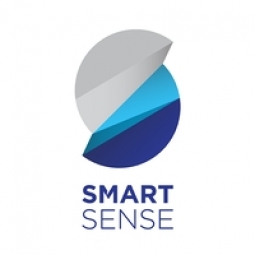下载PDF
Monitoring Air Polluants with AirQ

技术
- 功能应用 - 远程监控系统
- 网络与连接 - 窄带物联网
- 传感器 - 空气污染传感器
适用行业
- 城市与自治市
适用功能
- 商业运营
用例
- 室外环境监测
挑战
空气质量和对可能导致健康问题的污染物的监测对我们的日常生活变得越来越重要,政府和监管机构热衷于监测和管理由一系列污染物造成的空气质量差的影响。
客户
未公开
关于客户
-
解决方案
迄今为止,AirQ 传感器使用 3G 或 WiFi 连接从部署的传感器上传数据。然而,SmartSense 现在已经开发了一种 NB-IoT 节能替代方案,并旨在进一步发展一个可以完全离网以允许安装在任何位置的版本。
这项新计划的目的是开发一种新的 NB-IoT 供电的空气质量传感器,该传感器的性能与现有传感器一样好,并针对 NB-IoT 进行了优化,这意味着它将来可以由电池或太阳能供电。这将允许传感器安装在更多位置,同时保持较低的安装和运营成本。
使用 AirQ 传感器采取的第一步是优化解决方案以满足 NB-IoT 带宽要求,并重新设计设备的固件和硬件以支持 NB-IoT。部署的目的是测试 NB-IoT 的性能,以收集 AirQ 传感器当前收集的所有数据,并测量未来开发电池供电传感器的功率要求。
第一个 NB-IoT 试点现已在希腊 Xanthi 启动并运行,正在收集真实数据,如下面的屏幕截图所示。
收集的数据
Air Quality (PMI), Battery Voltage, Installation Diagnostics, Network Coverage, Pollutants detection
运营影响
相关案例.

Case Study
Turning A Stadium Into A Smart Building
Honeywell created what it called the “intelligent system” for the National Stadium in Beijing, China, turning the venue for the opening and closing events at the 2008 Summer Olympics into a “smart building.” Designed by highly controversial artist Ai Weiwei, the “Bird’s Nest” remains one of the most impressive feats of stadium architecture in the world. The 250,000 square meter structure housed more than 100,000 athletes and spectators at a time. To accommodate such capacity, China turned to Honeywell’s EBI Integrated Building Management System to create an integrated “intelligent system” for improved building security, safety and energy efficiency.
.png)
Case Study
Smart Street Light Network (Copenhagen)
Key stakeholders are taking a comprehensive approach to rethinking smart city innovation. City leaders have collaborated through partnerships involving government, research institutions and solution providers. The Copenhagen Solutions Lab is one of the leading organizations at the forefront of this movement. By bringing together manufacturers with municipal buyers, the Copenhagen Solutions Lab has catalyzed the development and deployment of next-generation smart city innovations. Copenhagen is leveraging this unique approach to accelerate the implementation of smart city solutions. One of the primary focus areas is LED street lighting.

Case Study
Buoy Status Monitoring with LoRa
The Netherlands are well-known for their inland waterways, canals, sluices and of course port activities. The Dutch Ministry of Infrastructure indicates that there are thousands of buoys and fixed items in and near water environments that would profit from IoT monitoring. One of the problems with buoys for example, is that they get hit by ships and the anchor cable breaks. Without connectivity, it takes quite some time to find out that something has happened with that buoy. Not to mention the costs of renting a boat to go to the buoy to fix it. Another important issue, is that there is no real-time monitoring of the buoys at this moment. Only by physically visiting the object on the water, one gains insight in its status.

Case Study
China Mobile Smart Parking
Smart Parking, powered by NB-IoT technology, is making it easier for drivers to find free parking spots. Cities can better manage their parking assets and maximize the revenue available to them as a result. Drivers searching for parking create congestion and pollution by circling and hunting for available parking. Smart Parking services are able to significantly ease these problems by guiding a driver directly to a parking space.

Case Study
Barcelona Case Study
Barcelona’s heavy traffic and its associated high levels of pollution were the primary factors that motivated some companies and universities to work on strategies for improving traffic in the city centre. Bitcarrier is one of the technologies involved in the In4Mo Project, whose main objective is to develop the applications that form the core of smart mobility, one of the fundamental pillars of the smart city concept.






